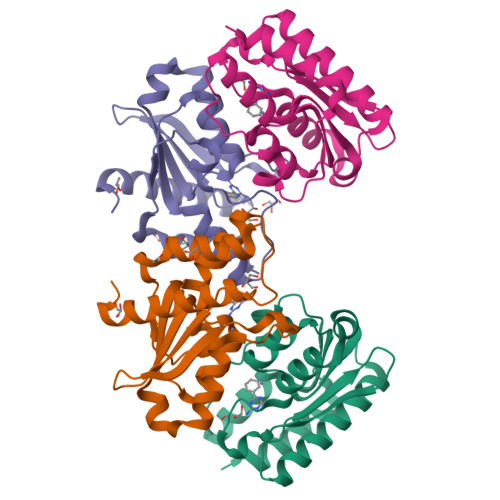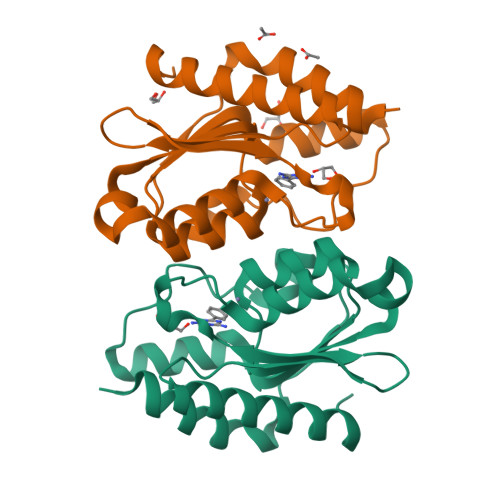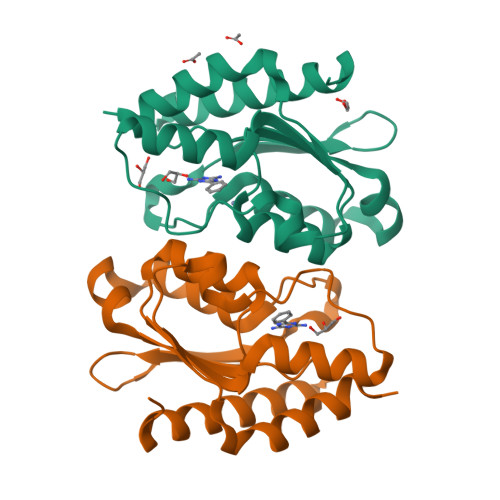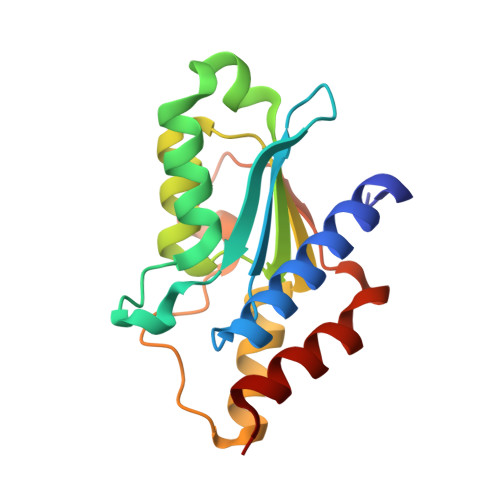Selective Deamination of Mutagens by a Mycobacterial Enzyme
Gaded, V., Anand, R.(2017) J Am Chem Soc 139: 10762-10768
- PubMed: 28708393
- DOI: https://doi.org/10.1021/jacs.7b04967
- Primary Citation of Related Structures:
5XKO, 5XKP, 5XKQ, 5XKR - PubMed Abstract:
Structure-based methods are powerful tools that are being exploited to unravel new functions with therapeutic advantage. Here, we report the discovery of a new class of deaminases, predominantly found in mycobacterial species that act on the commercially important s-triazine class of compounds. The enzyme Msd from Mycobacterium smegmatis was taken as a representative candidate from an evolutionarily conserved subgroup that possesses high density of Mycobacterium deaminases. Biochemical investigation reveals that Msd specifically acts on mutagenic nucleobases such as 5-azacytosine and isoguanine and does not accept natural bases as substrates. Determination of the X-ray structure of Msd to a resolution of 1.9 Å shows that Msd has fine-tuned its active site such that it is a hybrid of a cytosine as well as a guanine deaminase, thereby conferring Msd the ability to expand its repertoire to both purine and pyrimidine-like mutagens. Mapping of active site residues along with X-ray structures with a series of triazine analogues aids in deciphering the mechanism by which Msd proofreads the base milieu for mutagens. The genome location of the enzyme reveals that Msd is part of a conserved cluster that confers the organism with innate resistance toward select xenobiotics by triggering their efflux.
Organizational Affiliation:
Department of Chemistry, Indian Institute of Technology Bombay , Powai, Mumbai 400076, India.





















